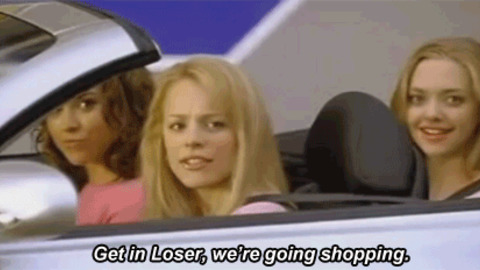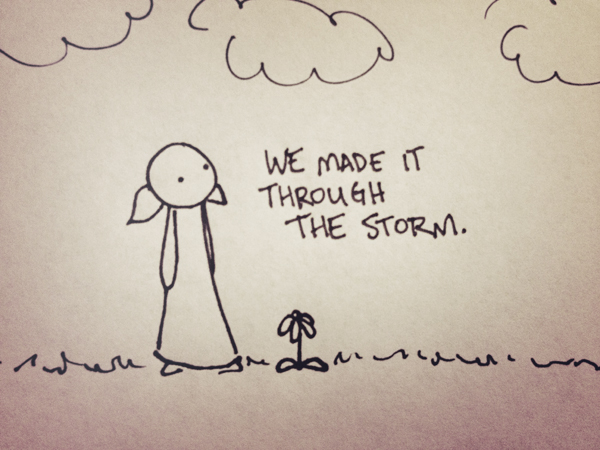I'd like to take a minute to revert back to my blog post from two weeks ago.
MCR's 2006 album, The Black Parade not only catapulted the band to smash hit success, but it also brought lots of new fans to their fanbase. This was in part due to their performance at the 2006 VMAs on MTV and also due to the fact MCR was getting more mainstream radio play. I believe this caused a seige of younger listeners to find themselves listening to the band, merely because their music was upbeat & catchy, while remaining unaware of the dark lyrical content being sung about.
The album is filled with "tragic lyrics" which "focus on the protagonist's self consummation, sense of hopelessness and attempt to cope with fate." (Sellnow 175) The album has both "intensity patterns and release patterns," (Sellnow, 172) depending on the song the listener is listening to. For example, the song, Disenchanted, a song embodying regret uses release patterns, while the song, Sleep uses intensity patterns, along with incongruity. The song, Sleep is about dying. On the distorted introduction tape recording, The Patient, voiced by Gerard, states: "it's not tremors, worse then tremors, they're these terrors, it feels like someone is gripping my throat, squeezing and..." The recording is purposely cut off and interrupted by the music, as if to represent The Patient's dying. His life has been interrupted, the way the tape recording has been interrupted by this disease. It, bam, occurs, the way the music bam, occurs. It is also important to note that the tape recording is repeated. I believe this is done to express the paranoia accompanied with fear of dying soon. The patient knows he's dying soon. The repetition of the distorted tape reflects his being gripped by the fear of death, continuously thinking over & over about it. The music represents his giving into death. The music acts as a type of "paralanguage" (Sellnow, 172) transitioning to the act of dying. The song is, in a sense, a transition. The song pairs tragic lyrics "augmented' within a poetic illusion. The poetic illusion helps to enforce the intensity pattern, however the poetic illusion shifts from poetic to dramatic as the chorus approaches. The song illuminates the process of dying. In the beginning of the song, he accepts his fate, mid song he dies, and at the end it's over, he's dead. The mid song representation of death is represented by the tape recording is replayed. This time, The Patient admits to seeing flames & seeing "people that he loves dying," indicating that now, at this moment, his soul is going to hell, he is dying & he is seeing everyone in his life fading away (dying) Instead of feeling paranoid, and putting off his fear, as he initially did, he gives into the heart wrenching experience of letting go of life. It's intense. Essentially, the music serves to remind the listener, that the entire song has come down to this, reflective of the idea that your life builds & builds but it all comes down to death. The mid point in the song makes you, the listener feel all sorts of screaming emotions. The crashing crescendo, reflects the listeners
and the Patient's emotions, fully embracing the intensity patterns. At this point, the listener and the Patient are one, essentially. All the emotions that the Patient and the listener were experiencing, all the rage, anger, and angst are finally released through Gerard's screams, and the intensity patterns of the song. The song ends with the return of the tape recording, this time with the tape saying: "I can't ever wake up." The Patient is dead. The heart-wrenching process of dying is over with the last note of the song.You, as the listener, were there for the entire cathartic experience.
A lot of songs on the album feature incongruity. When incongruity occurs, fanbases are broadened, but song meaning can become misinterpreted. I believe this happened with a lot of songs on the album, and thus being part of the reason MCR attracted a younger fanbase. To, the younger fan, and by younger I mean, 9-12 y/o. A younger fan could misinterpret a song like Sleep to be dreams, nightmares, and sleep, itself. They are likely to have to no idea the song is about death as sleep.
I think that not understanding what the song is really about definitely effects a listeners listening experience. Fortunately for me, the first time I heard Sleep, and all of the songs on the album, I was an older teenager. I was able to understand exactly what Gerard was going for.
While music as communication invites us all to have our own interpretation, and own unique meaning of a musical work, I believe musical rhetoric can be lost when not played to the right audience. If the music is not addressed to the right audience, the rhetorical argument has lost its value. This is why broadening a fanbase can be a bad thing, as much as it is a good thing.
The album uses both lyrical & musical ascription (Sellnow, 180) targeting the lyrics and music at a specific audience. The album is most likely to be enjoyed by a more theatrical person, someone who has an appreciation for the overdramatic, as the album is very overdramatic. Gerard & Company knew this, and purposely made their album a rocking, goth-infused drama to target the "drama/theater high school kids" who are usually nine times out of ten, punk or goth themselves. As listeners of the album, we know that everything the album deals with thematically has been way overdramatized, but that's part of the appeal of the album. By being overdramatic, it makes its listeners feel as if, well, you see, if you thought you had it bad, listen to this. As listeners, we buy into the albums story, we accept the experience of both life and death as a heart-wrenching horror story that has the capacity to make you scream, cry, and even maybe, smile all at the same time. That's what "The Black Parade" accomplishes. It reminds us that life is part of death, and death is part of life, so make a bunch of mixed memories now, because one day, it all ends, and you don't want to be like The Patient, regretting everything right up until the very end. I think that's ultimately the message that the album sends. It's almost as if the entire album is an example of how not to live your life, because if you live this way, regardless of your fate, regardless of what you die of, you're going to end up like The Patient on your deathbed. And you don't want to be in that state of regret.



















